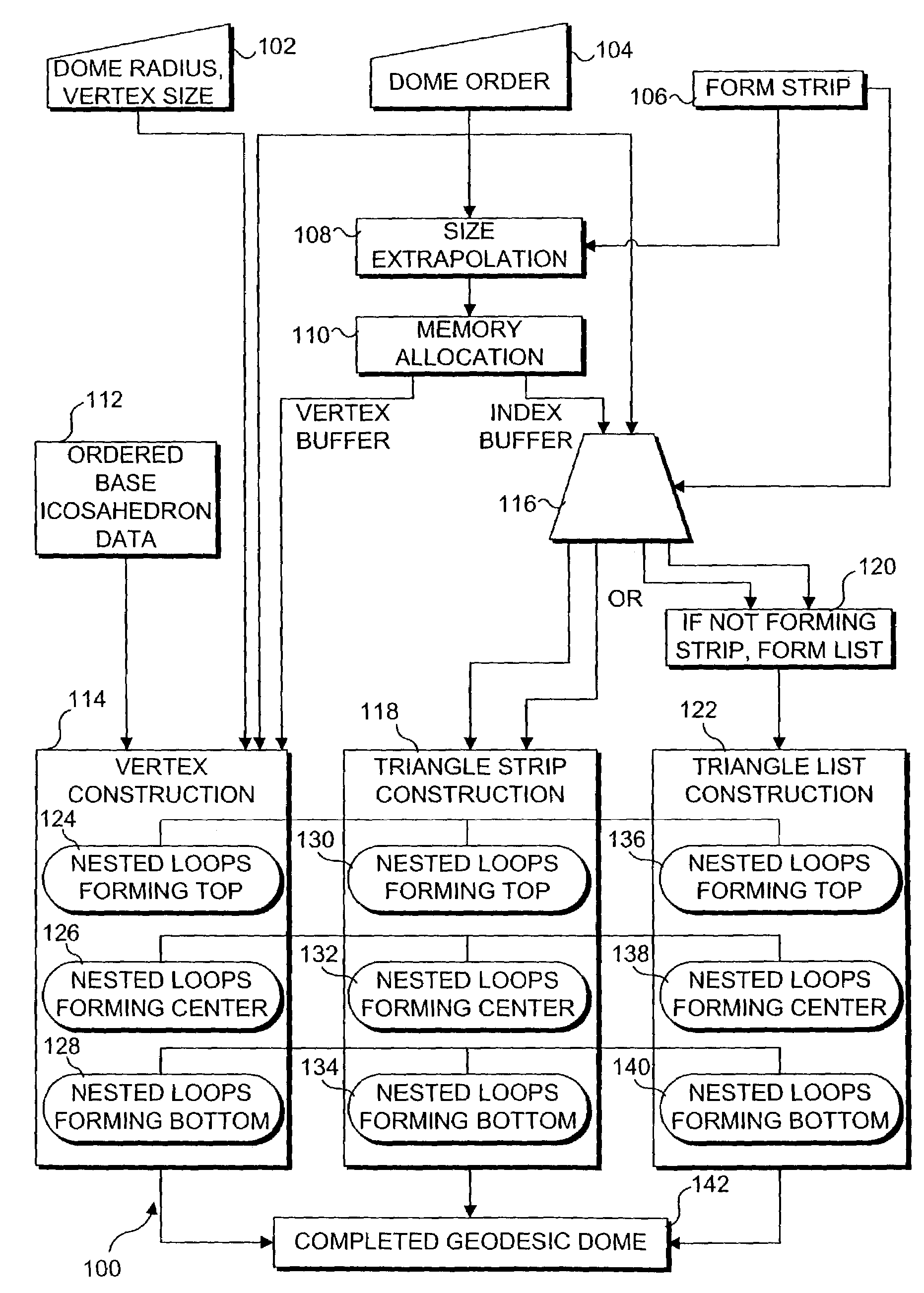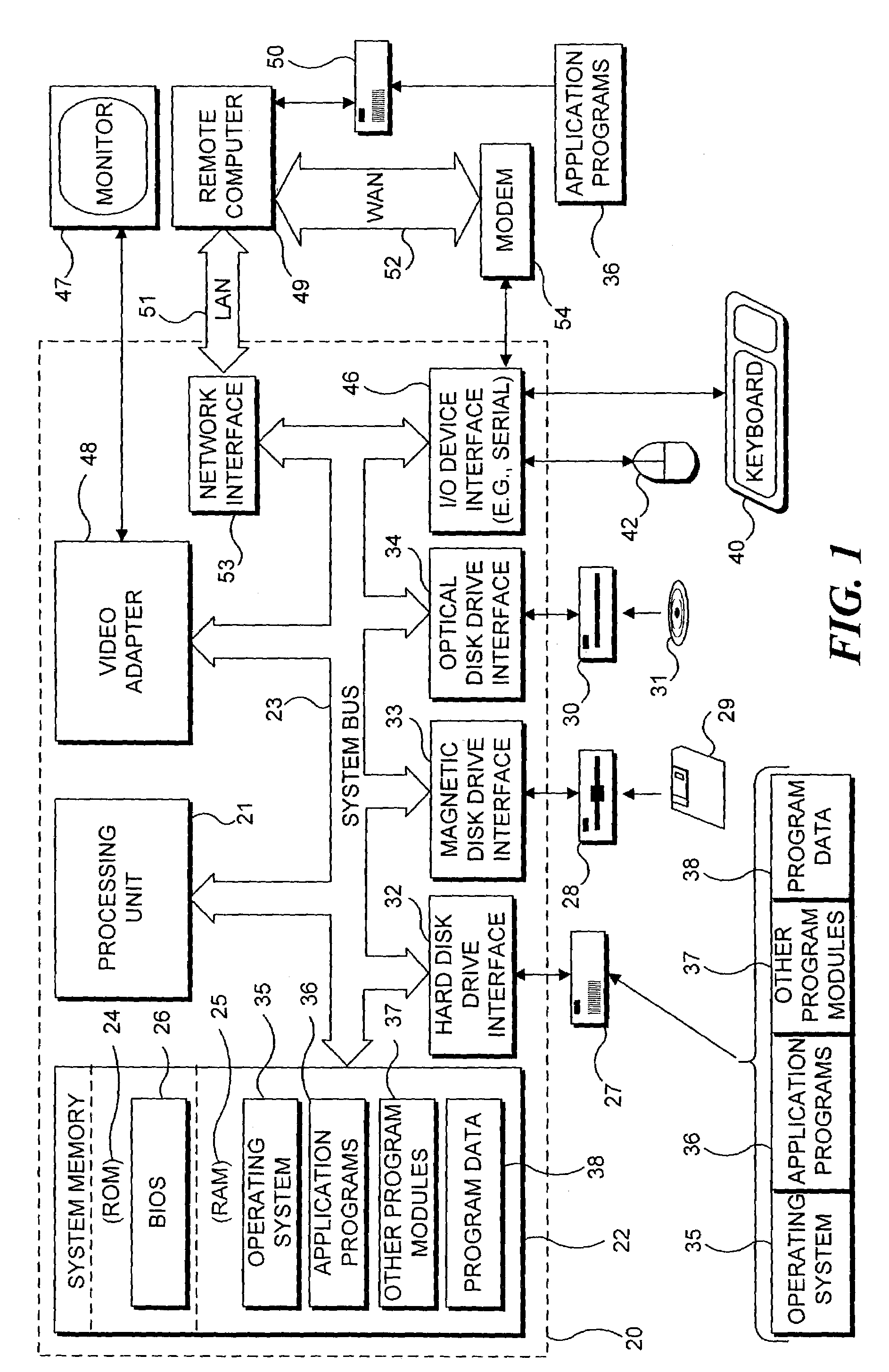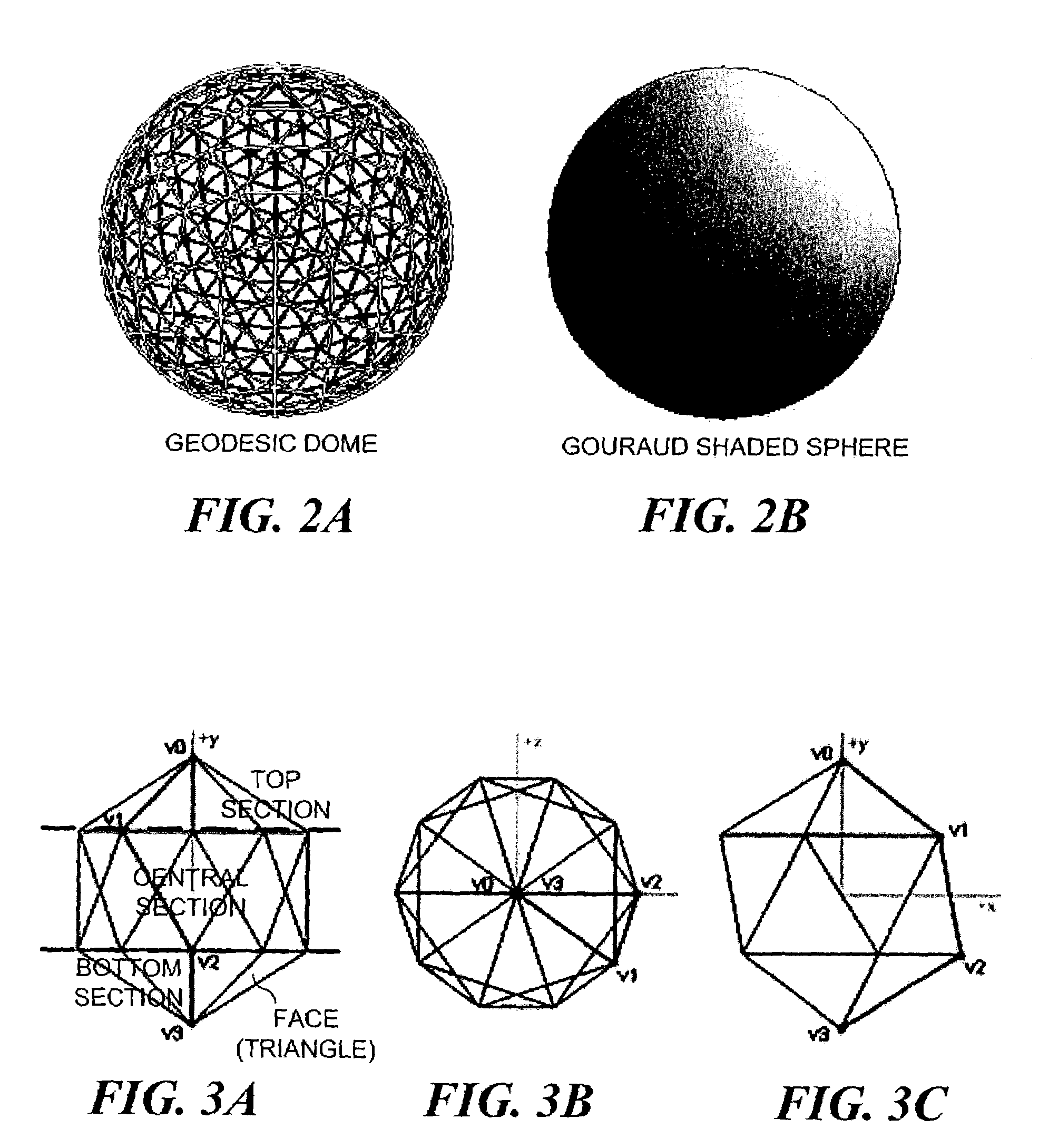Spiral construction of a geodesic dome
a geodesic dome and spiral construction technology, applied in the field of geodesic dome modeling, can solve the problems of clear inherent processing cost, sacrifice performance, drawbacks, etc., and achieve the effect of saving bandwidth
- Summary
- Abstract
- Description
- Claims
- Application Information
AI Technical Summary
Benefits of technology
Problems solved by technology
Method used
Image
Examples
Embodiment Construction
PC for Implementing the Present Invention
[0036]With reference to FIG. 1, an exemplary general purpose computing device useful for implementing the present invention is illustrated in the form of a conventional PC 20. While the present invention was initially developed for use on an electronic game playing system, it will be understood that the invention is generally applicable to almost any type of computing device that might be used to render a sphere or a portion of a sphere in electronic games, or in a virtual environment, or other graphic applications. Examples of such devices include mobile computers, hand held computing devices such as personal data assistants (PDAs), mobile communication devices (e.g., cell phones), and other computing devices that include a display on which a geodesic dome might be generated in accord with the present invention, for rendering a sphere or a portion of a sphere.
[0037]The following discussion is intended to provide a brief, general description ...
PUM
 Login to View More
Login to View More Abstract
Description
Claims
Application Information
 Login to View More
Login to View More - R&D
- Intellectual Property
- Life Sciences
- Materials
- Tech Scout
- Unparalleled Data Quality
- Higher Quality Content
- 60% Fewer Hallucinations
Browse by: Latest US Patents, China's latest patents, Technical Efficacy Thesaurus, Application Domain, Technology Topic, Popular Technical Reports.
© 2025 PatSnap. All rights reserved.Legal|Privacy policy|Modern Slavery Act Transparency Statement|Sitemap|About US| Contact US: help@patsnap.com



